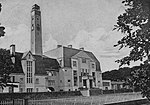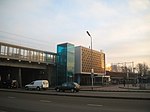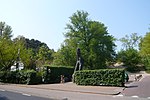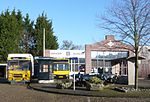Aerdenhout
BloemendaalPopulated places in North HollandVague or ambiguous time from April 2019

Aerdenhout (Dutch pronunciation: [ˌaːrdə(n)ˈɦʌut]) is a village in the municipality of Bloemendaal, Netherlands. Located in the dunes between Haarlem and the beach town of Zandvoort, it ranks as the wealthiest town in the Netherlands. The name "Aerdenhout" means Andere hout, Dutch for "the other wood", and was given it to distinguish this other wood from the Haarlemmerhout, just south of the city Haarlem.
Excerpt from the Wikipedia article Aerdenhout (License: CC BY-SA 3.0, Authors, Images).Aerdenhout
Schulpweg, Bloemendaal
Geographical coordinates (GPS) Address Nearby Places Show on map
Geographical coordinates (GPS)
| Latitude | Longitude |
|---|---|
| N 52.364444444444 ° | E 4.5972222222222 ° |
Address
Schulpweg
Schulpweg
2111 AL Bloemendaal
North Holland, Netherlands
Open on Google Maps








